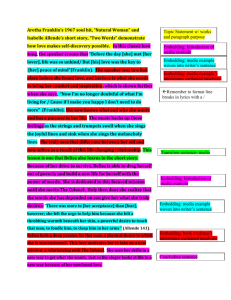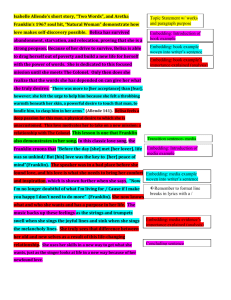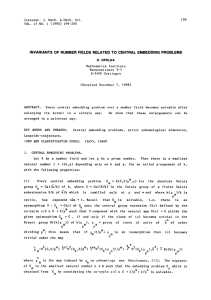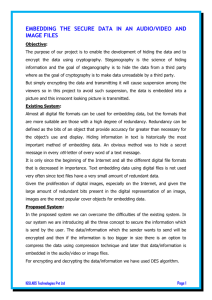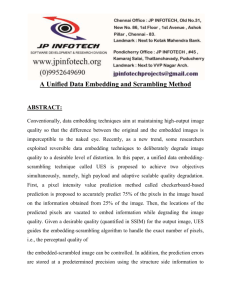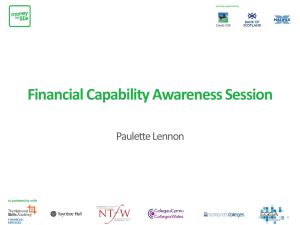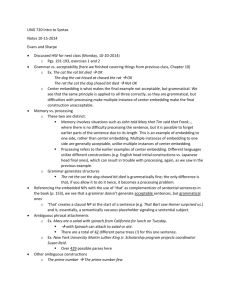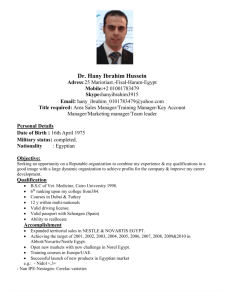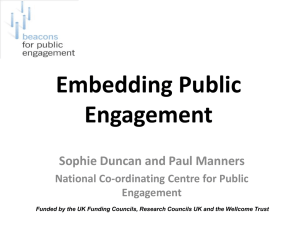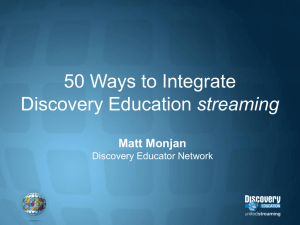Innovating for shared value -Article in HBR by Mark Pfitzer, Valerie
advertisement
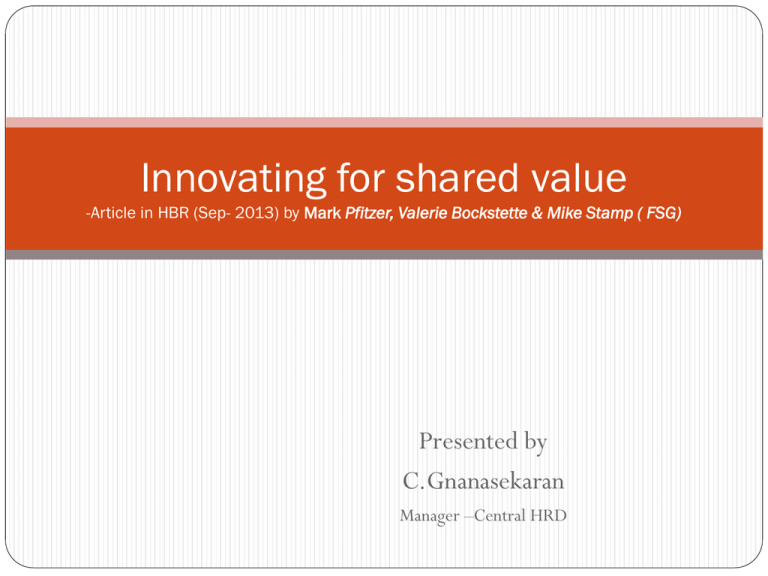
Innovating for shared value -Article in HBR (Sep- 2013) by Mark Pfitzer, Valerie Bockstette & Mike Stamp ( FSG) Presented by C.Gnanasekaran Manager –Central HRD Framework for creating sustainable social enterprise 1. Embedding a social purpose 2. Rigorously defining the social need 3. Measuring the social and business value 4. Creating the optimal innovation structure 5. Co-creating with external stakeholders 1. Embedding a social purpose Creating shared value entails embedding a social mission in the corporate culture and channelling resources to the development of innovations that can help solve social problems. In some cases, this is a matter of reemphasizing a firm’s founding social mission Turning the pursuit of shared value opportunities into a regular activity requires defining a clear social purpose, publicizing it internally and externally, and embedding it in core processes such as strategic planning and budgeting This establishes a culture that unleashes the best in employees and helps mobilize external partners that have similar goals Danone – Nutrition Food Dow – Canola & Sun flower seeds Beckton Dickinson - Needleless Injection Systems 2. Defining the Social need To recognise the importance of gaining insight into the needs to be addressed, understand the underlying social conditions and how best to change them. To conduct extensive research for developing a comprehensive view of the problem the people affected and their numbers the barriers to progress the options for driving change and the parties that can help Such knowledge provides the basis for anticipating resource requirements, developing the business case, and identifying the necessary execution capabilities inside and outside the company Nestle – Focus on Malnutrition in India Mars – Cocoa Production in West Africa 3. Measuring the social and business value a) Estimate the business and social value anticipating how a degree of change in a social condition will drive profits, through either incremental sales or reduced costs, and linking those benefits to the resources needed to achieve them It is an iterative process that considers how much social change is needed to unlock business value, strategies for achieving that change, and the possibility of getting others to invest in the initiative Establish intermediate measures and track progress c) Assess the shared value produced b) Coca Cola,Brazil - Coletivo initiative 4. Creating the optimal innovation structure Integrate with a legacy business a) Kemira Chemicals- New Water treatment solutions Create a semiautonomous unit b) Novartis - Arogya Parivar Obtain philanthropic or government support c) Vodafone – M-pesa mobile banking services Finance external entrepreneurs d) Boehringer Ingelheim – Making More Health Program GE & Embrace – Low Cost Incubator ( from $2000 to $200) 5. Co-Creating with External Stakeholders Involving stakeholders in identifying all the dimensions of a problem and designing and implementing solutions Enlist a wide range of stakeholders Clinton Health Access Initiative,MoH Kenya & HP – Data Sharing to speedup diagnosis and treatment for HIV patinets Mars & World Agroforestry Center – Improved Cocoa Farming in Ivory Coast Leverage others’ capabilities Tapping partners for their delivery capabilities Nestle & Drishtee Foundation – Distribution System Novartis Arogya parivar – Microfinancing for doctors and pharmacists Dow Chemicals Removed 600 million tons of trans fats and saturated fats from the U.S. diet and created a major business with its Nexera sunflower and canola seeds Nestle Helped millions of malnourished families in India and other countries by providing inexpensive micronutrient-reinforced spices, which are a fast-growing, profitable business Novartis Provided essential medicines and health services to 42 million people in 33,000 rural villages in India through a social business model that became profitable after 31 months Mars Catalyzed a cross sector coalition to transform farms and surrounding communities in Ivory Coast with the aim of avoiding looming cocoa shortages Intel Trained more than 10 million teachers in the use of technology to improve educational outcomes, turning education into a profitable business for the company Becton Dickinson Protected millions of health workers by creating needleless injection systems,which are now a $2 billion business for BD, accounting for 25% of the company’s revenue Vodafone Extended mobile banking services to 14 million people in East Africa through M-Pesa, one of the company’s most important offerings How does this relates to AECS? 1. 2. 3. 4. 5. Embedding a social purpose Rigorously defining the social need Measuring the social and business value Creating the optimal innovation structure Co-creating with external stakeholders Eliminating Needless blindness Prevalence and Magnitude and Market Conditions Periodical review, Quality control, Annual review Systems and processes, Outreach, Vision Centre, IT Intervention Working with community, INGOs, Corporates Summary The problem Social problems present daunting constraints to their operations and vast opportunities for growth Many are struggling to design and implement initiatives that deliver both social and business benefits Reasons Often companies have not been guided by a social mission Don’t know how to research social problems at the level needed to drive change leaders lack experience in measuring and linking social and business results and building networks of external stakeholders that include unfamiliar organizations can be challenging Summary…. Solution Framework to create profitable social enterprises embedding a social purpose, rigorously defining the social need, measuring the social and business value, creating the optimal innovation structure, and co-creating with external stakeholders Discussion THANK YOU
